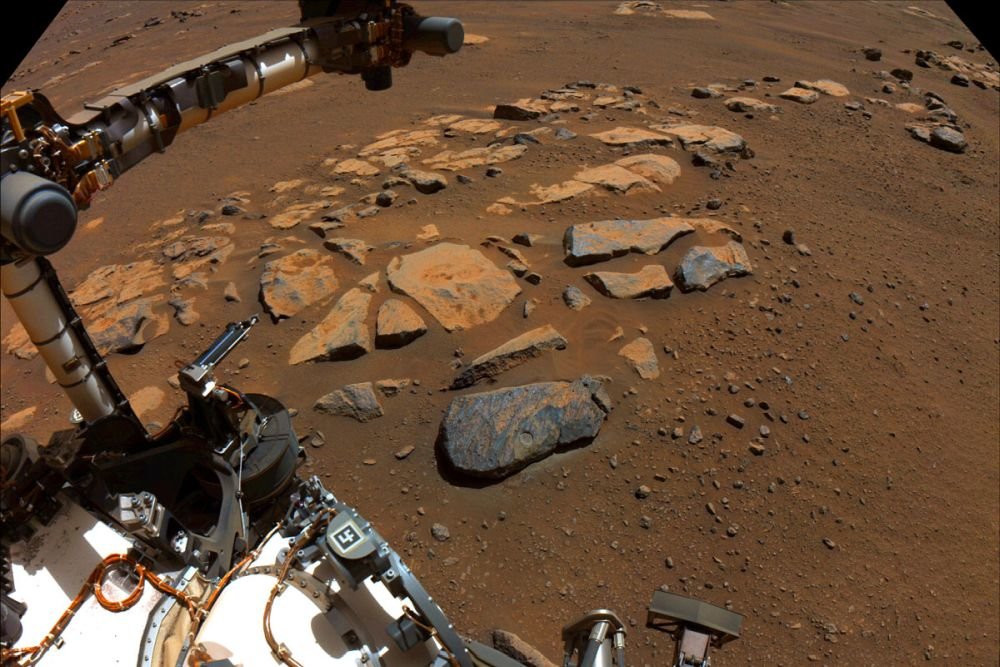
Mars rover mission NASA Perseverance found in the crater Jezero on Mars, organic molecules, which were capable of acting as “building blocks of life”.
About the opening is reported on the site of the Jet Propulsion Laboratory NASA. The Mars rover Perseverance since spring works in the crater Jezero. Previously it has found structures similar to organic molecules. A similar discovery is described in the new study.
NASA Perseverance mission team found that the rocks in the crater had a lot of contact with liquid water in ancient times. This suggested that Jezero was once a lake. Analysis has also shown that some of the Martian rocks contain organic molecules.
Such substances were found in the analysis of rocks and dust, which the rover found in the crater. By the way, one of the found rocks, according to scientists, in ancient times was formed from the surface of red-hot magma.
SHERLOC is designed to find organic molecules
Organic molecules have been identified using the SHERLOC tool. It is designed to scan the environment using Raman light scattering. Luminescence method is used directly to search for organic and chemical substances. The latter helped to determine that carbon-containing molecules were not only found inside the rocks analyzed by the SHERLOC instrument, but also in the dust.
Confirming the presence of organic matter is not proof that life once existed in the Jezero Crater, the researchers note. The fact is that similar biosignature can also create non-biological mechanisms that create organics. At the same time, the discovered molecules, according to scientists’ estimates, were quite capable of serving as “building blocks of life.”
“Earlier, the Curiosity rover also found organic matter at its landing site in Gale Crater,” said study co-author Luther Beagle. – What SHERLOC adds to this story is its ability to map the spatial distribution of organic matter within rocks and relate those organics to the minerals found there. This helps us understand the environment in which the organic matter formed. But in order to determine the method of their formation, additional analysis of the detected organics is necessary.”
According to the scientist, the discovery of organic molecules inside ancient rocks, regardless of their origin, is in any case a breakthrough discovery. The mere fact that it suggests that potential biosignatures, that is, signs of life, may have been preserved not only in the Gale and Jezero craters, but also in other regions of Mars.
“This is a question that can’t be resolved until samples are delivered to Earth, but the very fact that organic matter is preserved is very interesting,” says Beagle. – When these samples are delivered to Earth, they will be the subject of scientific research and discovery for years to come.”




